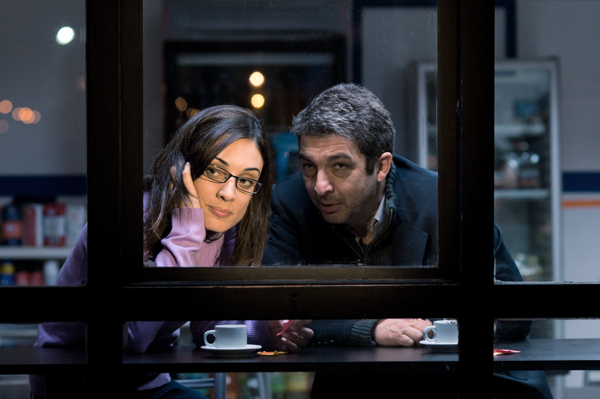|
Reviews of Recent Independent, Foreign, & Documentary Films in Theaters and DVD/Home Video

CARANCHO Director Pablo Trapero’s down-market film noir begins bluntly, with a car colliding into a pedestrian. That’s followed by another sort of thumping: several kicks to the head to the film’s male protagonist. According to the opening credits, traffic accidents are a leading cause of death in Argentina; there are more than 8,000 annually. Trapero makes less of an indictment of the scamming industry sprouting from this phenomenon and much more of a gritty thriller set on the wildly accident-prone streets of Buenos Aires, where everyone is on the take and make, one way or another. The script zeroes in on Luján, a doctor, and Sosa, an ambulance chaser. Luján tends to the bloody and bruised victims from traffic accidents that Sosa might have had a hand in orchestrating. She first notices Sosa wheedling his way at an accident scene, where he hands out his business card to a barely conscious victim. Actor Ricardo Darín, who plays Sosa, is best known in this country for last year’s Oscar-winning The Secret in Their Eyes, and has appeared in some of the best known South American films of the last decade, but this is really Martina Gusman’s film. The audience has Sosa’s number from the get-go. A vulture (the film’s title in Spanish) on the prowl for a new client, preferably one critically injured, Sosa works for a low-rent law office that promises the highest compensation for accident victims while taking a hefty cut out of the jackpot. The brisk and guarded Luján is all business, pulling all nighters in the emergency room or ambulance. Steely and unflappable, she reveals little for the first half of the film, becoming the film’s central mystery: why would she agree to have coffee with a bottom-feeder? Or invite him into her apartment? Even though Sosa’s charming, she’s already on to him. His pursuit of her is a conceit, the necessary linchpin that will launch that one last, final swindle before he gets out the racket. (The film has another plot device up its sleeve, a barely developed quick fix to fill a gaping plot hole. Consider this a spoiler avoider.) The understated Gusman (the film’s executive producer) keeps us guessing about the good doctor’s intentions. After another roadside accident that confirms Luján’s worst suspicions of Sosa, the camera follows her down the dilapidated hospital’s corridors until she finds and confronts him—the winding camera movement providing most of the tension. Whereas most directors would allow the lead actress to go to town for a big, scene-stealing moment, Gusman pulls back, yet Luján’s sense of self-hatred for tangling with Sosa palpably jumps out from the screen. Much like in his previous films, El
Bonaerense (another film of corroding corruption) and Lion’s Den,
Trapero isolates his characters, confining them to one insular
working-class district. Cut off,
everyone here lives by his own rules.
But unlike
these other films, Carancho moves like an out of control freight
train. Trapero drives the pace with so much urgency (and maybe with too
much economy) that the
plot’s credibility goes splat in the last half, especially concerning Luján. Trapero
doesn’t wallow in small, telling details or ambience, like previously,
so the force of the narrative becomes less about the couple’s strange
relationship and more about following the thriller playbook. He
overreaches with double crosses and twists and turns, overstraining to
surprise the audience. The over-the-top ending incongruously stands out
compared to earlier scenes that unfolded with a logic of their own.
(Even his lead actress changes course, releasing the tear
ducts and verging on hysteria, much like the storyline.) The cheap suits,
the under-lit cinematography, and hand-held camera can’t compensate the
viewer for the loss of off-the-cuff realism.
Kent Turner
|

